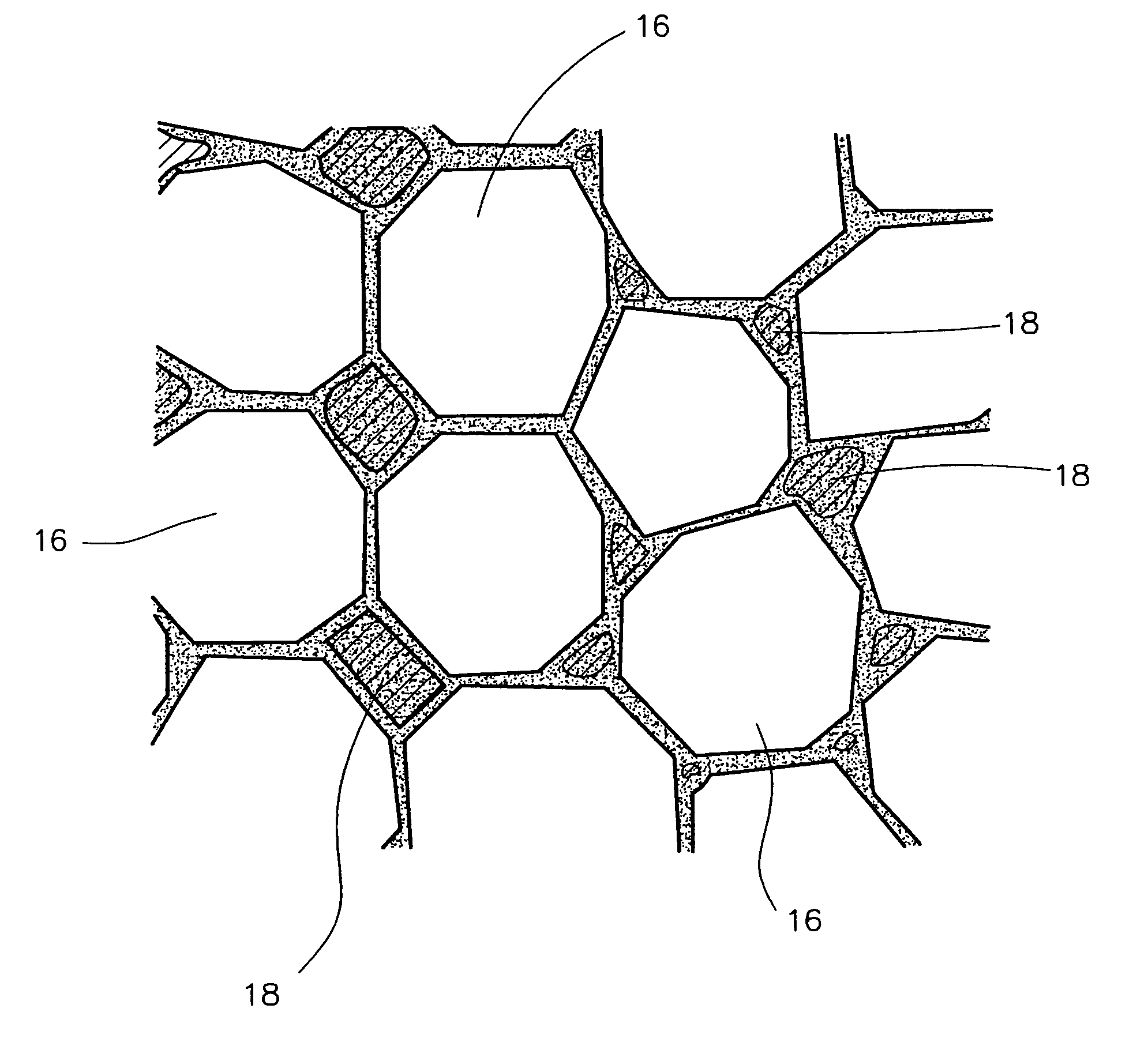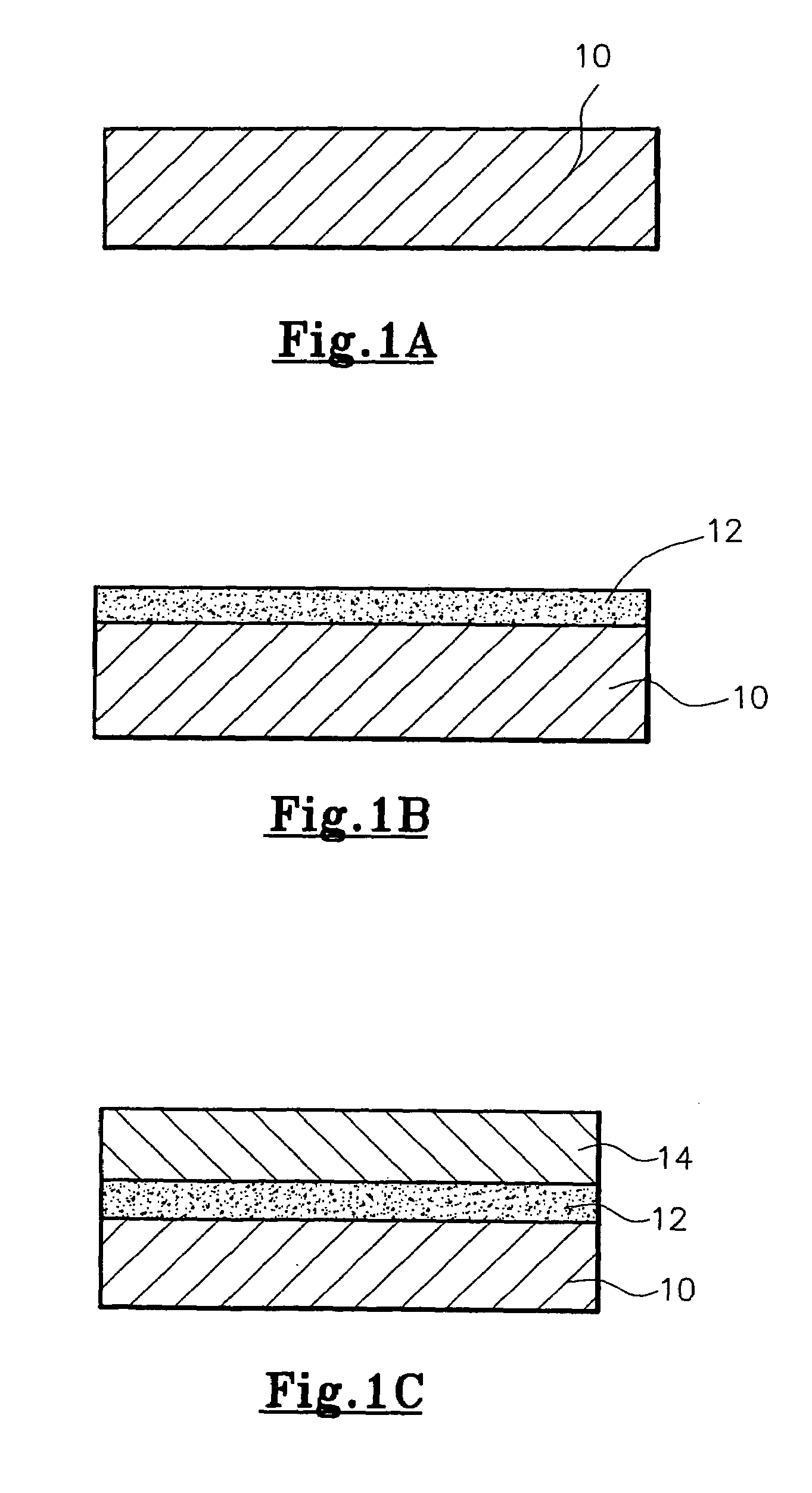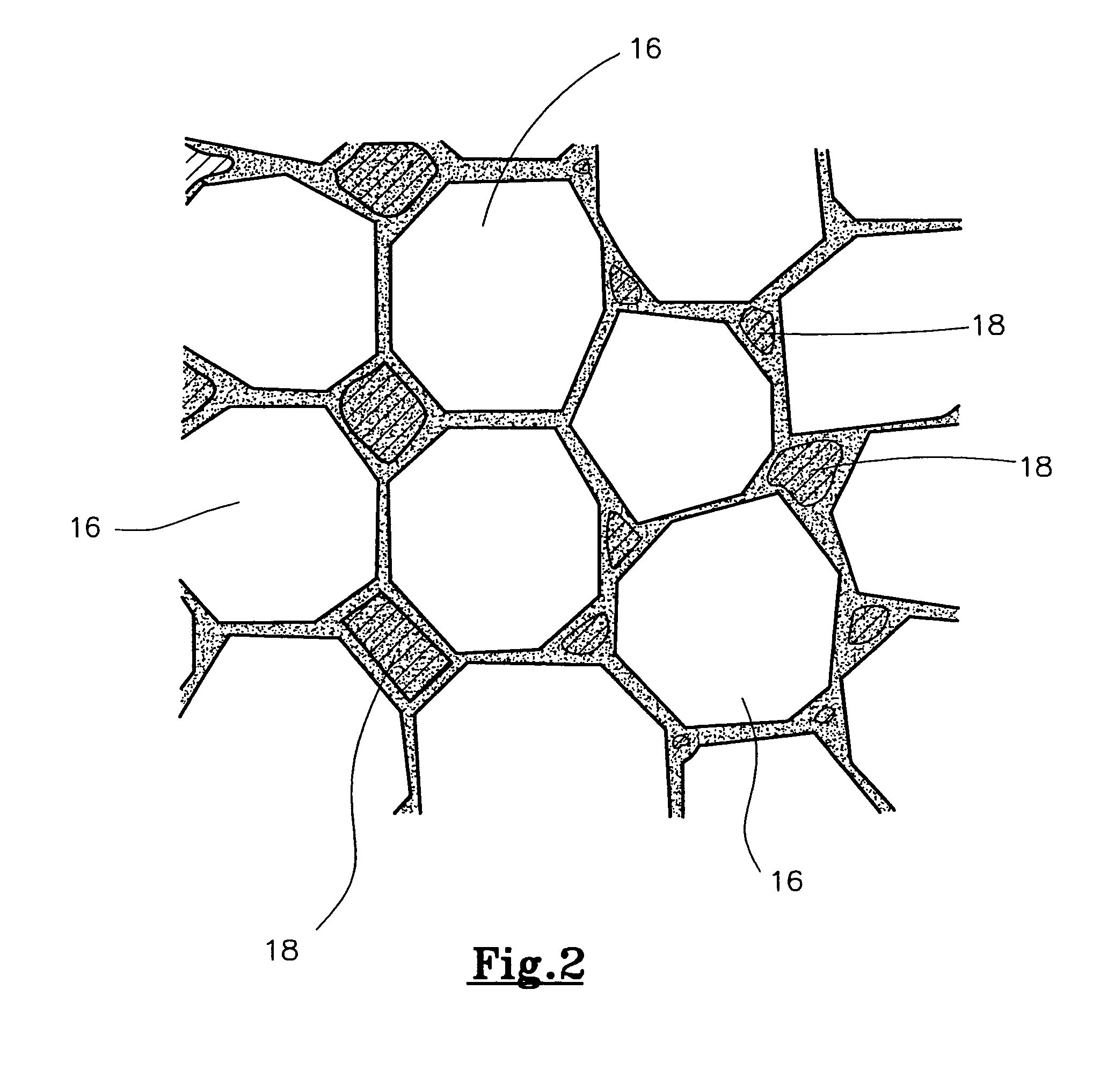Method of forming a nanocomposite coating
a technology of nanocomposite coating and nano-composite coating, which is applied in the direction of superimposed coating process, natural mineral layered products, transportation and packaging, etc., can solve the problems of affecting the value of such products, requiring high temperature treatment for a long time, and easily scratching or otherwise damaging the surface of stainless steel in daily us
- Summary
- Abstract
- Description
- Claims
- Application Information
AI Technical Summary
Benefits of technology
Problems solved by technology
Method used
Image
Examples
example 1
[0033]Stainless steel watch bracelets were first de-waxed and thoroughly cleaned, and then placed on the carriers 110 of the ion-sputtering apparatus 100. After closing the door 108, the chamber 102 was pumped down to a base pressure of 2×10−6 torr (i.e. mmHg; equivalent to around 2.666×10−4 Pa). During pumping down, the chamber 102 was heated up to 300–350° C. When the required base pressure of 2×10−6 mmHg (i.e. around 2.666×104 Pa) was reached, argon (Ar) gas was introduced into the chamber 102 and the pressure in the chamber 102 was raised to 5×10−3 torr (i.e. around 0.667 Pa). A negative biasing voltage of 600–800 volts was applied to the watch bracelets, which initiated bombardment of argon atoms onto the watch bracelets, to thereby remove any residual contaminants from the surface of the watch bracelets.
[0034]The switchable power source 120 was then connected to the double-sided pure titanium target 122, whereby a thin layer (of a thickness of from 0.02 to 0.20 micron) of tita...
example 2
[0038]Instead of using pure stainless steel and chromium targets, as discussed in Example 1 above, alloy targets of stainless steel and chromium were used. The alloy targets contained 40–60 wt. % of stainless steel, with the rest being chromium. The process was very similar to that discussed in Example 1 above, except that stainless steel and chromium particles were co-sputtered reactively in a carbon gas plasma, forming adjacent molecules of stainless steel and chromium carbide. Again, when the stainless steel articles, which were watch cases in the present Example, were away from the deposition locations, the stainless steel and chromium carbide molecules relaxed into their most thermodynamically suitable sites, thus forming the nanocomposite structure of hard stainless steel and chromium carbide coating.
example 3
[0039]Stainless steel watch casings were first de-waxed and thoroughly cleaned, and then placed on the carriers 110 of the ion-sputtering apparatus 100. After closing the door 108, the chamber 102 was pumped down to a base pressure of 2×10−6 torr (around 2.666×10−4 Pa). During pumping down, the chamber 102 was heated up to 300–350° C. When the required base pressure of 2×10−6 mmHg (i.e. around 2.666×10−4 Pa) was reached, argon (Ar) gas was introduced into the chamber 102 and the pressure in the chamber 102 was raised to 5×10−3 torr (i.e. around 0.667 Pa). A negative biasing voltage of 600–800 volts was applied to the watch casings, which initiated bombardment of argon atoms onto the watch casings, to thereby remove any residual contaminants from the surface of the watch casings.
[0040]The switchable power source 120 was then connected to the double-sided pure titanium target 122, whereby a thin layer (of a thickness of from 0.02 to 0.20 micron) of titanium was first deposited onto th...
PUM
| Property | Measurement | Unit |
|---|---|---|
| thickness | aaaaa | aaaaa |
| biasing voltage | aaaaa | aaaaa |
| temperature | aaaaa | aaaaa |
Abstract
Description
Claims
Application Information
 Login to View More
Login to View More - R&D
- Intellectual Property
- Life Sciences
- Materials
- Tech Scout
- Unparalleled Data Quality
- Higher Quality Content
- 60% Fewer Hallucinations
Browse by: Latest US Patents, China's latest patents, Technical Efficacy Thesaurus, Application Domain, Technology Topic, Popular Technical Reports.
© 2025 PatSnap. All rights reserved.Legal|Privacy policy|Modern Slavery Act Transparency Statement|Sitemap|About US| Contact US: help@patsnap.com



